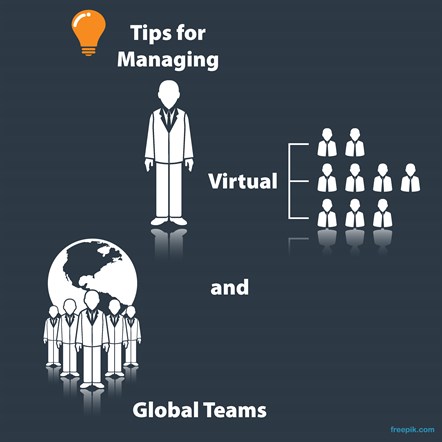Tips for Managing Virtual and Global Teams
As a localization project manager, I frequently work with teams from different parts of the world who speak many languages, come from diverse cultures and work in different time zones. I like the exposure to various cultures, but it also brings along some challenges.
I am sure all localization project managers, or anyone else, who are a part of a global team have interesting stories to tell about miscommunication that occurred due to language barriers or have had a simple issue that took a long time and several email exchanges to get resolved because team members were spread across the world.
To make sure nothing gets lost in translation, here are a few tips for managing virtual and global teams:

Put in place clear processes, strategies and policies.
People have different ways of performing tasks. Therefore, setting clear standards and policies will align the team members and ensure people perform tasks consistently and effectively.
Provide clear instructions, requirements and schedules.
Find the balance between providing vague instructions and micromanaging. Give the team the details they need to complete a project, meet expectations for the outcome and retain the freedom to self-manage. Tasks and projects should be clearly defined, documented, and shared with the relevant members. It is also important to set tasks ownership and communication protocols.
Create a communication plan.
Communication among global, virtual teams is as challenging as it is infrequent, with limited face-to-face communication. It is helpful to set up clear communication channels and methodologies. For example, setting rules for conference meeting communication, such as limiting background noise, no multi-tasking during meetings, and encouraging the team to participate actively, establishes clear expectations on how communication should happen in virtual meetings. Taking advantage of communication tools, like Skype and video web conferencing software can also make communicating easier.
Be aware of time zone differences.
When assigning tasks and setting deadlines, it is very important to take into consideration time zones and weekend differences. The same goes for scheduling calls or meetings. Every now and then, you might need to adjust your work schedule to have a meeting with another team member on the other side of the world.
Be sensitive to cultural and language barriers.
It’s crucial to have an awareness of the cultural differences among your team. For example, someone might be communicating in a very direct manner and other colleagues might be less direct in their communication. Language barriers also can present communication problems, slang and colloquial speech might not make sense to non-native speakers.
Hire the right people.
During the recruiting process, make sure to select the team that will represent your company’s image, share your vision and goals, and fit into the company’s culture. Not everyone can work virtually, as some people are only disciplined in an office environment or are not active team players.
Use project management or workflow tracking tools.
These tools will help you keep track of deadlines, set alerts and reminders and give you an array of status reports. They will also help to organize project documents and emails so anyone can easily find the information they need.
Summary
When working virtually with global teams, it’s important to set clear expectations for working together, have defined processes for projects and tasks, and most importantly, have explicit communication and patience with each other. Once you figure out how to effectively navigate working in a virtual environment with your coworkers, you are in for an exciting and very interesting working environment.
